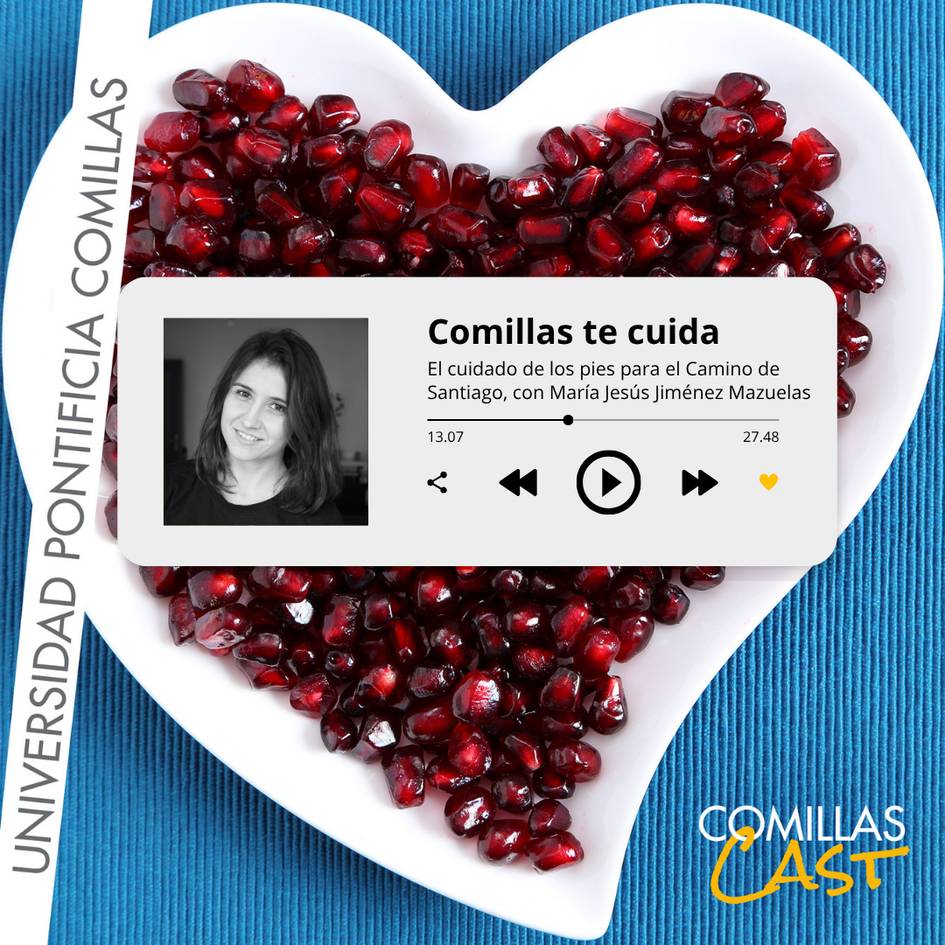How should we take care of our feet for the Camino de Santiago?
The EUEF San Juan de Dios - Comillas launches a new episode of its podcast "Comillas takes care of you", where María Jesús Jiménez Mazuelas, Doctor in Physiotherapy, podiatrist and head of the Choose your Motion health centre in Madrid; gives us some tips to prepare our feet for the Camino de Santiago.

In 2024, more than 1.5 million people walked some of the routes of the Camino de Santiago, consolidating this journey as a global and inspiring experience .
The French Way was once again the favourite, with 47% of pilgrims, followed by the Portuguese Way and its coastal variant. In addition, 58% of walkers came from abroad, which shows that this journey inspires thousands of people outside our borders .
However, although the arrival at the Plaza del Obradoiro in Santiago de Compostela is the highlight of the trip, there is something that every pilgrim learns on this journey: the Camino begins in the feet .
Choosing the right footwear
Taking care of your feet is key to ensuring a smooth experience. A common mistake among pilgrims is to wear new shoes, a decision that can lead to blisters and major discomfort during the journey .
According to María Jesús Jiménez Mazuelas "51% of pilgrims have blisters. A very useful mechanism to reduce pressure is to place a film that reduces the friction force, and that is achieved with Vaseline.
In addition, he also recommends using Trekking or Trail shoes that are flexible, with non-slip soles and cushioning. In the same vein, if you expect a lot of rain, you should opt for footwear with Gore-Tex, to avoid moisture problems .
Another tip is to wear a second pair of shoes, such as flip-flops or clogs. These options not only provide protection in the shower area, but also allow you to move around and give your feet a rest.
Finally, special attention should also be paid to socks. Although 100% cotton socks are a good option, the specialist recommends technical socks without seams, as they help reduce friction and improve perspiration, avoiding annoying blisters.
Preparation and prevention
Those who suffer from diabetes, chronic illnesses or scoliosis should pay special attention to their physical condition before undertaking this activity, as their feet may be affected .
Likewise, if there is a history of areas of hyperpressure and rubbing in the feet, it would be a good idea to visit a podiatry centre for a study of the footprint and thus be able to reinforce these areas .
According to María Jesús Jiménez Mozuelas, "the most important thing is to prepare well for the Camino. Once you start, there may be some incident and should have resources to alleviate it, including a small kit with materials to mitigate the consequences of a blister or any discomfort that may arise.
If you are thinking of doing the Camino de Santiago, access the full podcast here

With paid international internships, scholarships and a focus on mobility and digital transformation, this English-language programme based in Madrid develops leaders for the global industry.

A solidarity initiative that donated part of the proceeds to the Red Cross project in the Gaza Strip and Lebanon

This study proposes a theoretical framework for understanding and measuring that trust .
